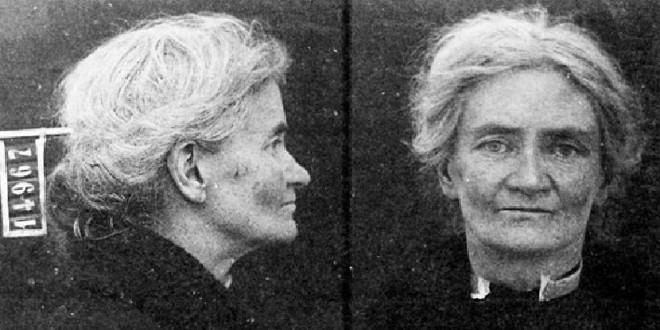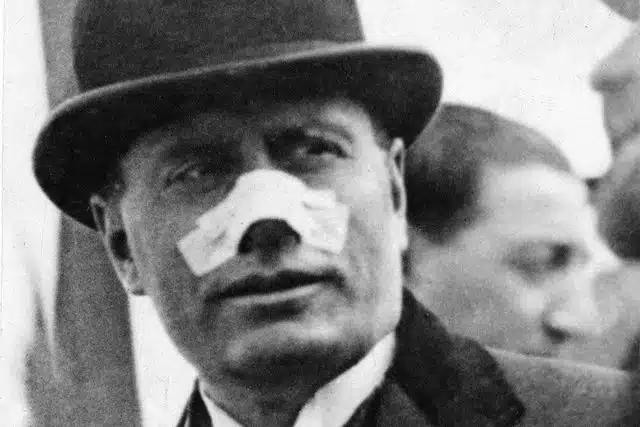Dublin woman Violet Gibson, who attempted to assassinate the fascist Italian dictator Benito Mussolini, has been commemorated by a Dublin City Council Commemorative Plaque.
The plaque was unveiled by Lord Mayor Caroline Conroy at 12 Merrion Square, Dublin 2, Gibson’s childhood home.
Speaking at the unveiling, Lord Mayor Caroline Conroy said, “In recent years the City Council has been working to put a focus on the women of history, with Commemorative Plaques being erected in memory of women like Kathleen Lynn and Madeleine Ffrench-Mullen, Anna Parnell, Margaret Keogh, Jane Wilde, and Hannah Sheehy-Skeffington. I am pleased to be unveiling another plaque to a woman, a Dubliner who suffered from misogyny and from the stigma surrounding mental illness, due to which her real motivations were deliberately obscured.”

The Honourable Violet Albina Gibson was born in Dalkey in 1876 into a wealthy Anglo-Irish family and raised in Merrion Square.
She received her title at age nine when her father was made the Lord Chancellor of Ireland and the first Baron Ashbourne in 1885.
Educated at home by governesses, she was a debutante at the court of Queen Victoria, and lived a very privileged life regularly, appearing in the society columns, at balls, concerts in London and Dublin, social events at Buckingham Palace, family holidays in France and Italy and skiing in San Moritz.
At the age of twenty one, she received an independent income from her father and decided to pave her own path in life. She travelled extensively pursuing her interest in religion, politics and philosophy.
Her conversion to Catholicism caused much upset in her family. She moved to London, rejecting and freeing herself from the conventions of her privileged background.
On April 7th 1926, three years into Benito Mussolini‘s fascist rule of Italy, Violet Gibson drew a pistol and shot Mussolini at point blank range in front of an adoring crowd in the Campidiglio Rome.
Mussolini‘s head turned as she did so, and the bullet grazed his nose. She fired again, but the gun jammed. Following her attempt on Mussolini’s life, Violet Gibson was placed in an asylum in England where she was kept with little or no contact with the outside world. She died in the asylum in 1956.
Also speaking at the unveiling was writer and producer Siobhán Lynam, whose 2014 RTÉ radio documentary, “The Irishwoman Who Shot Mussolini”, brought Violet Gibson’s story to light for many and in 2020, promoted a new wave of interest in Gibson’s story as co-producer with partner and director Barrie Dowdall, of the film, “Violet Gibson, The Irish Woman Who Shot Mussolini.”
“I’m honoured to be here for the unveiling of this plaque to commemorate Violet Gibson who was, for nearly a century, a mere passing footnote in the history of Italian fascism. Violet was a highly intelligent, artistically gifted, well-travelled and bold thinking woman. She was a convert to Catholicism, had a strong commitment to social justice and was an avid pacifist and an activist in the anti-war movement. The rise and violence of fascism in Italy horrified her. Of all the would-be assassins of Mussolini, she came closest to changing the course of history. Judged ‘a mad Irish mystic’, ‘a crazy Irish spinster’ by a world who thought Mussolini perfectly sane, she paid an enormous personal price for her extraordinary daring. Having endlessly petitioned for 30 years, appealing to Princess Elizabeth and Churchill amongst others, to be at least released to a Catholic nursing home, she died alone in her 80th year in the lunatic asylum. Her letters were never posted”.
The decision to erect the plaque was made by the Dublin City Council Commemorations & Naming Committee. Councillor Mannix Flynn, a member of the Committee who proposed that the plaque be erected, remarked, “It is now time to bring Violet Gibson into the public eyes and give her a rightful place in the history of Irish women and in the history of the Irish nation and its people”.








